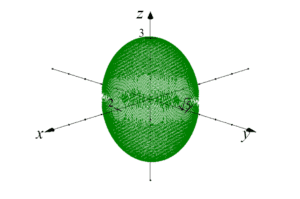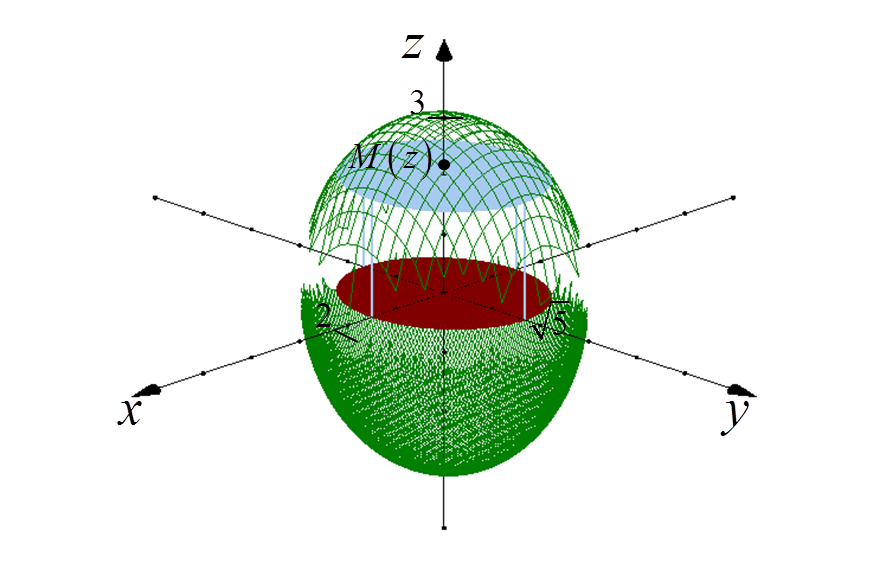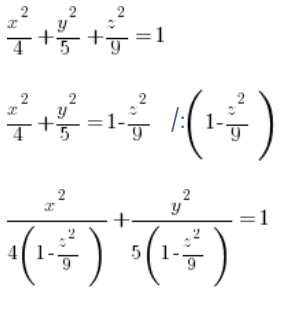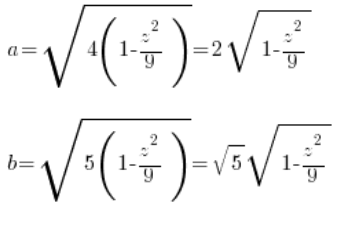 Let’s say we need to calculate the volume of an ellipsoid:
Let’s say we need to calculate the volume of an ellipsoid:

This ellipsoid intersects the x, y, z axes at coordinates 2, ![]() and 3, respectively (the general equation of the ellipsoid is:
and 3, respectively (the general equation of the ellipsoid is:  , where a, b, c are the coordinates of the intersections).
, where a, b, c are the coordinates of the intersections).
This is not a rotational ellipsoid, not formed by rotating any curve around any axis, so we can’t use the standard formula for the volume of a rotational solid:

We need to figure out another way.
1. Choose any point M(z) at the center of the ellipsoid and on the OZ axis.
A plane passing through this point and perpendicular to the OZ axis “cuts” out a certain ellipse from the ellipsoid:

2. Determine the equation of the “cut-out” ellipse projection on the XY plane

We determine the equation of this ellipse, for a fixed ‘z’ (treating ‘z’ as a constant) from the general equation of the ellipsoid:

You can see that our ‘a’ and ‘b’ from the general equation of the ellipsoid ( ) are:
) are:

4. Calculate the area of this section as a function of ‘z’
The area of this ellipse depends on the chosen point ‘z’, so it will be a function of ‘z’. We can calculate it either using the ready formula for the area of an ellipse (![]() ):
):

Or by laboriously calculating the appropriate definite integral (using, of course, the parametric form of the ellipse and the formula for the area of a region in parametric form):

5. Calculate the volume of the solid using the cross-sectional areas
Now comes the tricky part. The volume of the solid is equal to – this sounds a bit awkward – the “sum” (i.e., the integral) of all the cross-sections, which in general is:

where ![]() is the function of the cross-sectional areas of the solid with a plane perpendicular to the OZ axis, and ‘a’ and ‘b’ are the bounds within which ‘z’ varies.
is the function of the cross-sectional areas of the solid with a plane perpendicular to the OZ axis, and ‘a’ and ‘b’ are the bounds within which ‘z’ varies.
So for us:
 = (calculate, calculate, calculate…) =
= (calculate, calculate, calculate…) = ![]()
This matches the general formula for the ellipsoid ( ).
).
THE END
It’s worth remembering this general scheme, and most importantly, that the volume of more complex, non-rotational solids can be calculated by integrating the function of their cross-sectional areas.

